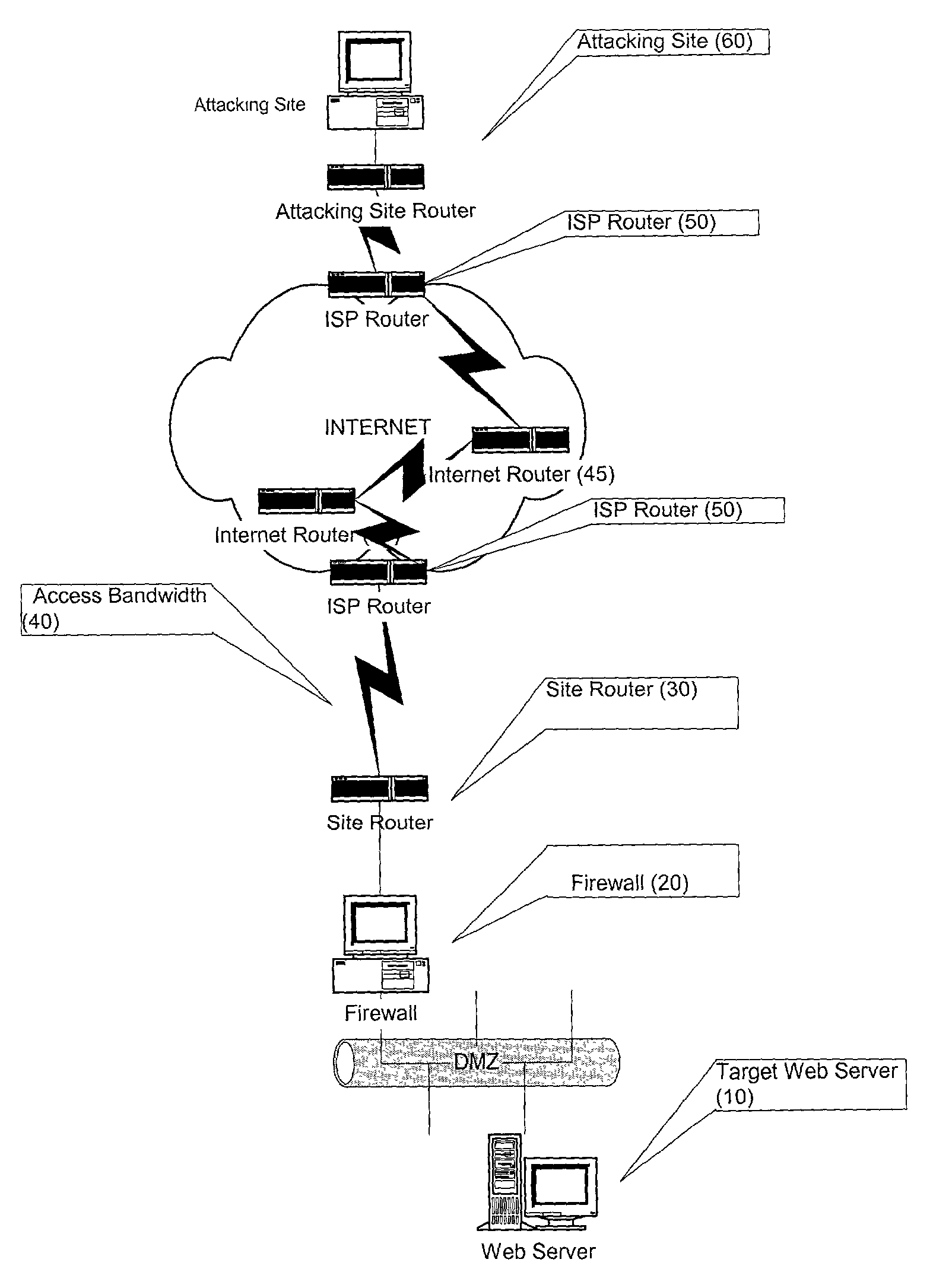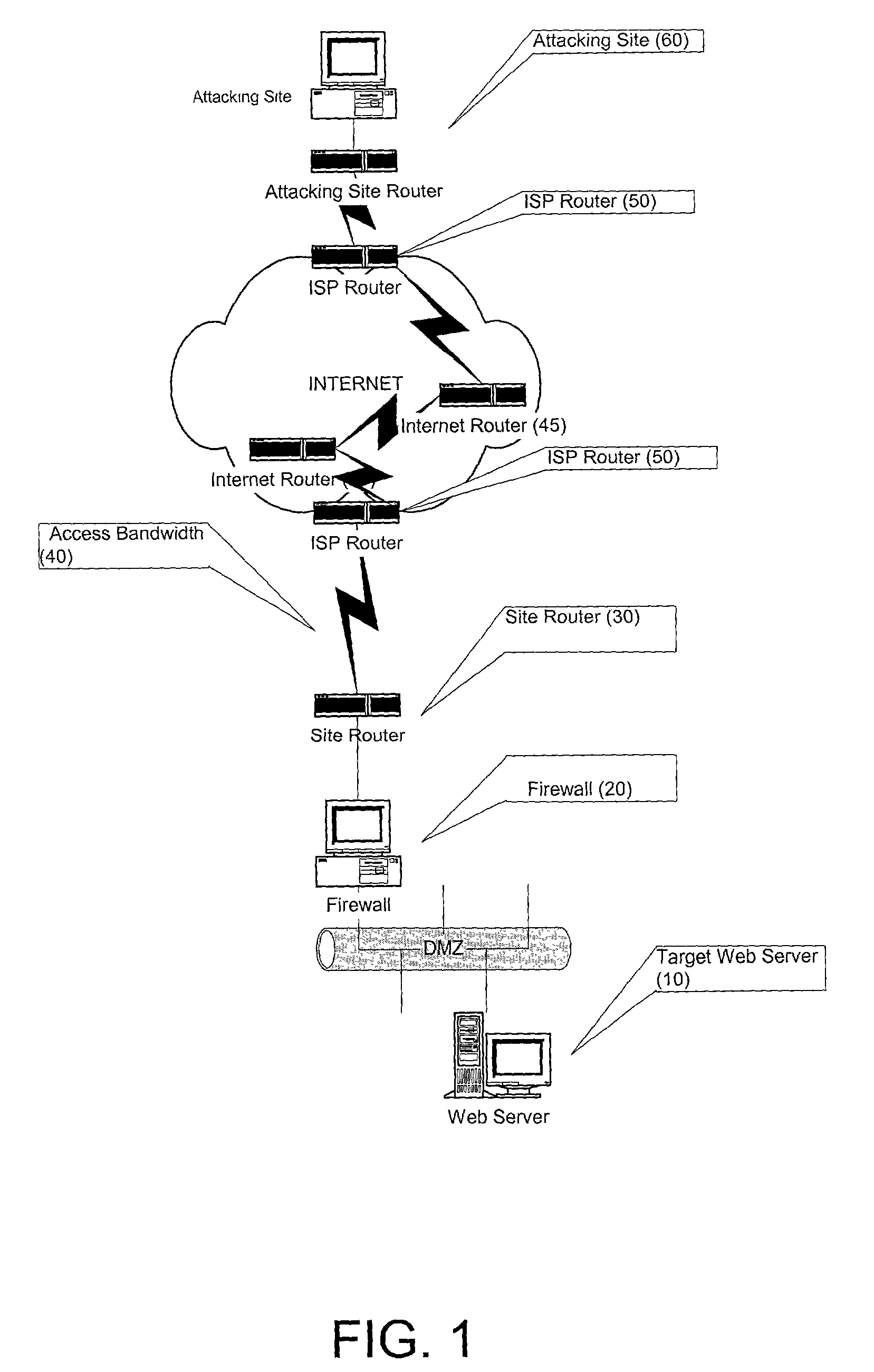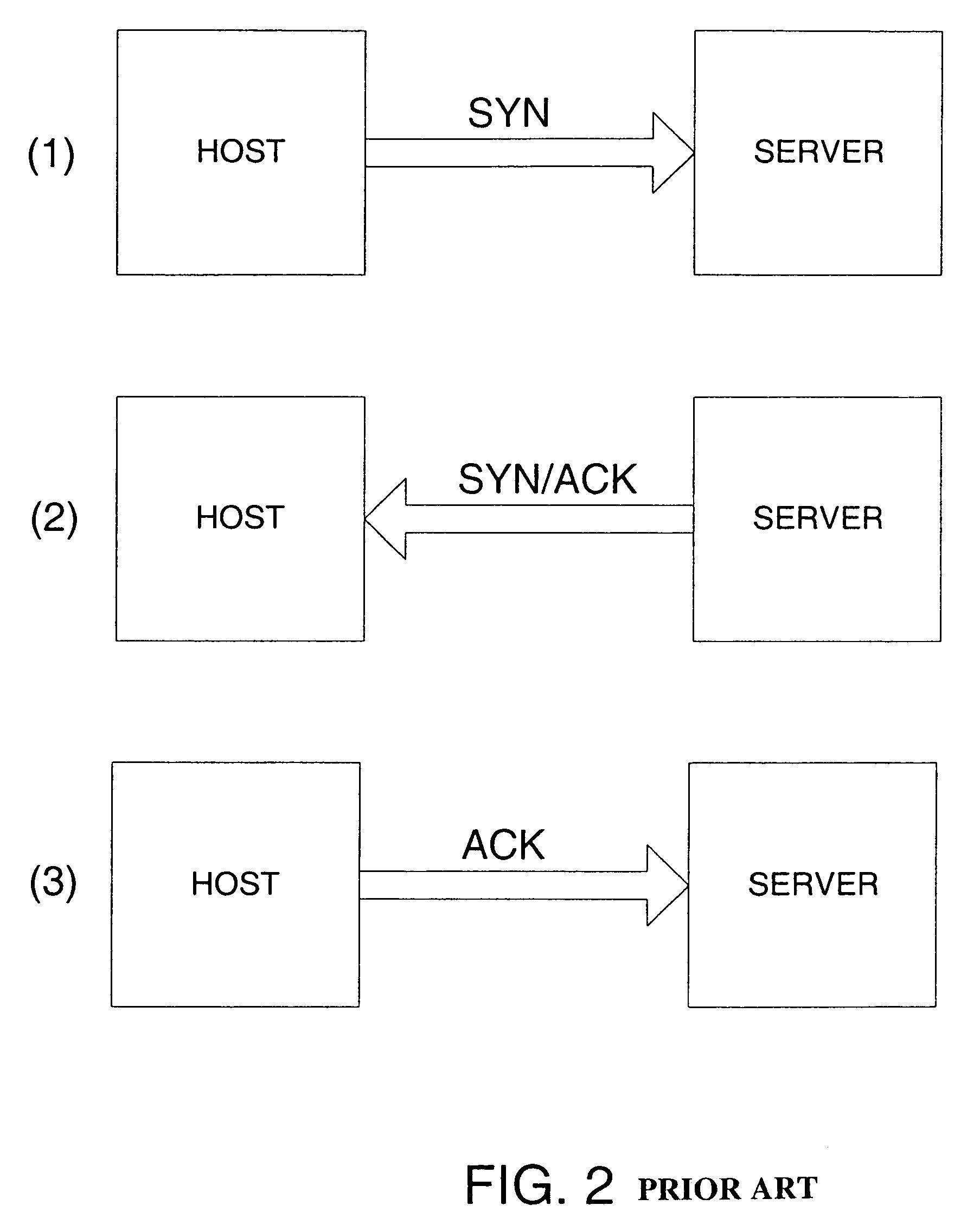Prevention of bandwidth congestion in a denial of service or other internet-based attack
a technology of denial of service and internet-based attack, applied in data switching networks, frequency-division multiplexes, instruments, etc., can solve the problems of inability to respond to legitimate requests, server overloaded, and mail and web servers being rendered unavailable to users for extended periods of tim
- Summary
- Abstract
- Description
- Claims
- Application Information
AI Technical Summary
Benefits of technology
Problems solved by technology
Method used
Image
Examples
Embodiment Construction
[0038]In a Denial of Service (DOS) attack, as outlined above and depicted in FIG. 1, it is common for an attacking client (60) to repeatedly solicit a number of connections from a target server (10) connected to the Internet. The attacker, however, typically has no intention of completing the standard three-way handshake, illustrated in FIG. 2, which is required to establish a connection. Accordingly, if / when a response is sent from the server (10) to the client (60) acknowledging the intention to connect, the attacking client merely ignores the response, resulting in a half-open connection, illustrated in FIG. 3. The server under these circumstances, not realizing that there is no intention to connect, ‘assumes’ that the request is legitimate and reserves buffer space for the connection. Even if half-open connections are dropped by the server after a period of time, the server's bandwidth will still get congested since the attacking client will continue to send bogus requests to th...
PUM
 Login to View More
Login to View More Abstract
Description
Claims
Application Information
 Login to View More
Login to View More - R&D
- Intellectual Property
- Life Sciences
- Materials
- Tech Scout
- Unparalleled Data Quality
- Higher Quality Content
- 60% Fewer Hallucinations
Browse by: Latest US Patents, China's latest patents, Technical Efficacy Thesaurus, Application Domain, Technology Topic, Popular Technical Reports.
© 2025 PatSnap. All rights reserved.Legal|Privacy policy|Modern Slavery Act Transparency Statement|Sitemap|About US| Contact US: help@patsnap.com



